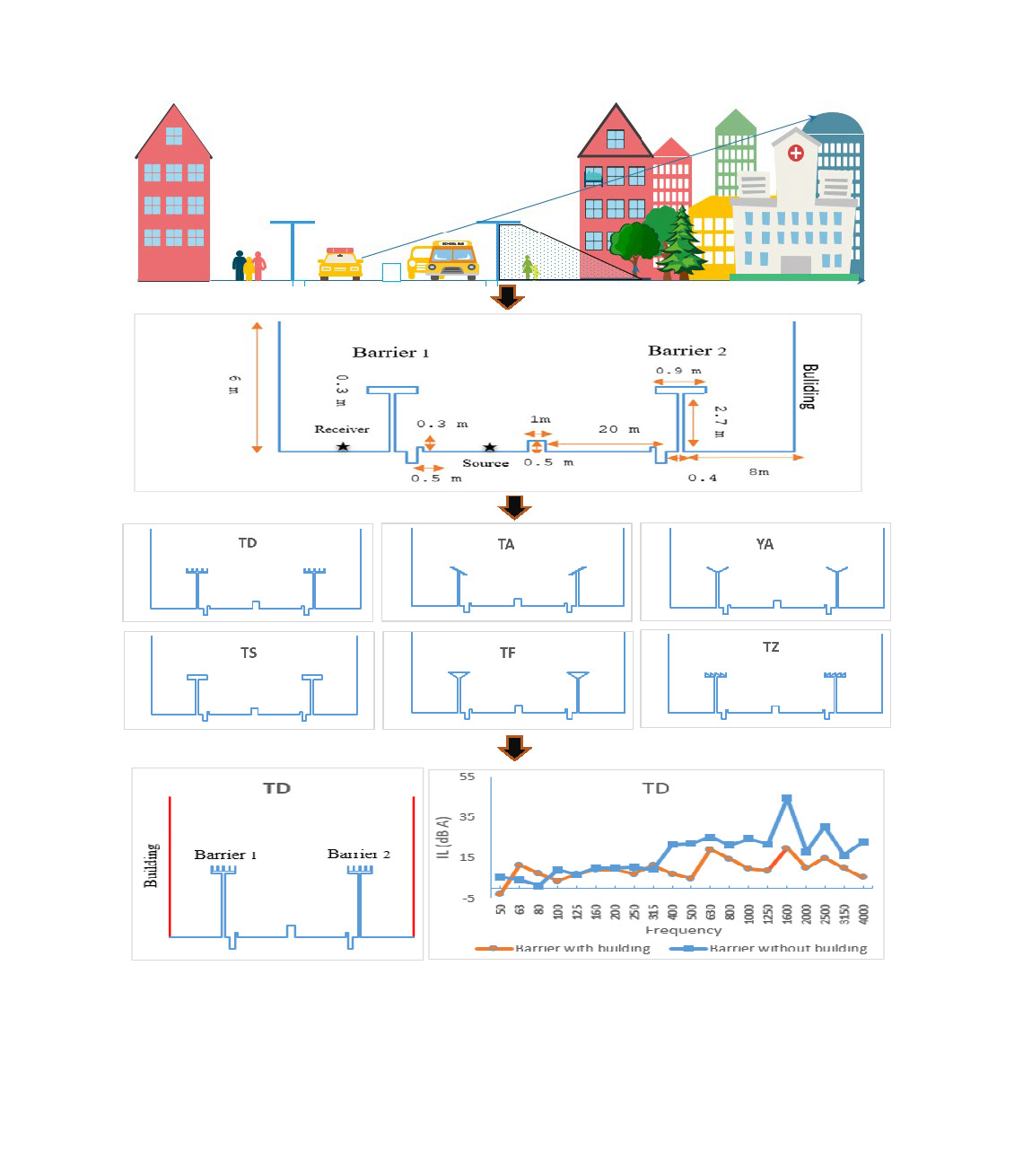Volume 12, Issue 1 (3-2022)
J Health Saf Work 2022, 12(1): 141-159 |
Back to browse issues page
Download citation:
BibTeX | RIS | EndNote | Medlars | ProCite | Reference Manager | RefWorks
Send citation to:



BibTeX | RIS | EndNote | Medlars | ProCite | Reference Manager | RefWorks
Send citation to:
Karami E, Monazzam M, Azrah K, Mohammadian M, Goodarzi Z. Effect of Buildings around Highways on the Efficiency of T-Shaped Parallel Acoustic Barriers: A Theoretical Study. J Health Saf Work 2022; 12 (1) :141-159
URL: http://jhsw.tums.ac.ir/article-1-6638-en.html
URL: http://jhsw.tums.ac.ir/article-1-6638-en.html
Esmaeil Karami1 
 , Mohammadreza Monazzam1
, Mohammadreza Monazzam1 
 , Keykaous Azrah1
, Keykaous Azrah1 
 , Mehdi Mohammadian1
, Mehdi Mohammadian1 
 , Zahra Goodarzi *
, Zahra Goodarzi * 
 2
2

 , Mohammadreza Monazzam1
, Mohammadreza Monazzam1 
 , Keykaous Azrah1
, Keykaous Azrah1 
 , Mehdi Mohammadian1
, Mehdi Mohammadian1 
 , Zahra Goodarzi *
, Zahra Goodarzi * 
 2
2
1- Department of Occupational Health Engineering, School of health, Tehran University of medical sciences, Tehran, Iran
2- Department of Occupational Health Engineering, School of Health, Tarbiat Modares University of Medical Sciences, Tehran, Iran ,z.goodarzi13@yahoo.com
2- Department of Occupational Health Engineering, School of Health, Tarbiat Modares University of Medical Sciences, Tehran, Iran ,
Abstract: (1545 Views)
Introduction: Over recent years, various programs have been conducted to reduce noise, indicating the increasing concerns of society over noise pollution. This study has been performed to enhance the performance of parallel barriers on two sides of a highway considering the surrounding buildings.
Material and Methods: The 2D boundary element simulation method was employed to predict the noise reduction in barriers. Regarding the effect of buildings and water canals, various kinds of models were investigated to compare the effectiveness of different boundary barriers in real conditions from a listener’s perspective.
Results: The use of a single YA model could improve the performance of parallel barriers by 3.5 dB compared to that of a TS model. Moreover, by using a pair of barriers, no significant change was observed in the performance of the second barrier. However, by using parallel barriers along the surrounding buildings, the TD model improved the efficiency by 3 dB compared to the TS model. The rise in the frequency resulted in remarkable adverse effects on the barrier performance, such that the surrounding buildings at a distance of 8 m had a negative effect on the performance of the parallel barriers by almost 8.34 dB.
Conclusion: In general, by ignoring the buildings, the use of a pair of TZ barriers showed a higher performance. Meanwhile, by considering the buildings in the design model, the TD model was found to be optimum. Therefore, it can be concluded that choosing an ideal barrier only based on the noise behind it cannot indicate its behavioral and acoustic characteristics in a real environment.
Material and Methods: The 2D boundary element simulation method was employed to predict the noise reduction in barriers. Regarding the effect of buildings and water canals, various kinds of models were investigated to compare the effectiveness of different boundary barriers in real conditions from a listener’s perspective.
Results: The use of a single YA model could improve the performance of parallel barriers by 3.5 dB compared to that of a TS model. Moreover, by using a pair of barriers, no significant change was observed in the performance of the second barrier. However, by using parallel barriers along the surrounding buildings, the TD model improved the efficiency by 3 dB compared to the TS model. The rise in the frequency resulted in remarkable adverse effects on the barrier performance, such that the surrounding buildings at a distance of 8 m had a negative effect on the performance of the parallel barriers by almost 8.34 dB.
Conclusion: In general, by ignoring the buildings, the use of a pair of TZ barriers showed a higher performance. Meanwhile, by considering the buildings in the design model, the TD model was found to be optimum. Therefore, it can be concluded that choosing an ideal barrier only based on the noise behind it cannot indicate its behavioral and acoustic characteristics in a real environment.
Keywords: Parallel noise barriers, Boundary Element Method (BEM), 2D simulation, T-shaped barriers, traffic noise reduction
Type of Study: Research |
Received: 2022/03/6 | Accepted: 2022/03/30 | Published: 2022/03/30
Received: 2022/03/6 | Accepted: 2022/03/30 | Published: 2022/03/30
Send email to the article author
| Rights and permissions | |
 |
This work is licensed under a Creative Commons Attribution-NonCommercial 4.0 International License. |





